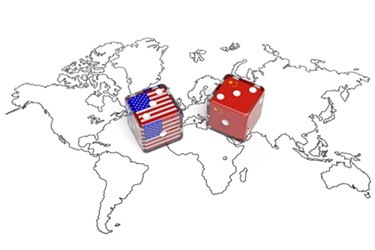Biologics In China: Market-Driven Inevitability, New Quality Start

By Louis Garguilo, Chief Editor, Outsourced Pharma

China today is a relatively small player in biologics development and manufacturing. It will become a big player in this sector of the drug industry in the future. Moving from that status to that future is an inevitability, and a natural progression.
And it should not be viewed as deleterious to the U.S. pharma industry or patients here.
Eric Langer, President, BioPlan Associates, Inc., outlines this scenario based on developments over the past 10 years. China, he says, has a nascent, but actively transforming biologics landscape. The transformation is led by domestic policy, an emerging China Biopharma, and Big Pharma. Biologics developers and manufacturers there are domestically and soon-to-be internationally focused, meaning China should ascend to an outsized and global role over the coming decade.
To Langer, this transformation is quite understandable. It’s powered first and foremost by the growing domestic demand in China for better healthcare; it’ll be sustained by a focus on advanced-technology manufacturing.

“I have to say,” Langer offers, “the people you’ve been talking with are just not seeing all the components of the global biopharmaceutical industry – and this huge market opportunity. China will become a big player in biologics. This is only natural; there’s good reason for that. Fear mongering about ‘hollowing out our manufacturing capability’ really does not play out in the biologics industry. It’s far too complicated for that. The industry is highly regulated. Market and distribution dynamics simply don’t allow sales, for example, like in consumer electronics.”
Some Answers To Fundamental Questions
Langer answers some fundamental questions we’ve had regarding the amount of manufacturing currently undertaken by Western biopharma in China. Much of his current understanding stems from a recently released (and peer-reviewed) study by his company, in association with the Society for Industrial Microbiology. His answers have three components:
- Most all biopharma activity in China today hinges on the size and potential of the domestic market. However, over 85% of Chinese biologics producers plan to be exporting GMP quality biologics to western markets within the next 5 years.
- Compared to small molecules, currently “very limited outsourcing” of biologics development and manufacturing is being done by Western companies to China. However, this may change as more CMOs in China are established, and facilities receive permission to produce biologics for others (from the Chinese government). According to BioPlan’s 15th Annual Report, China has become the number one possible destination for US companies considering outsourcing of services for biologics over the next 5 years.
- It’s important to segregate “biologics” markets. For example, innovative therapies vs biosimilars, or bioequivalents. For now, multinationals and Chinese companies will likely manufacture biosimilars in China.
All this differs substantially from the small-molecule space, and the production of chemical APIs and generics for global markets and multinational companies. This small- and large-molecule bifurcation is extremely important (more on this in a moment).
Markets On Both Sides
“Consider a company like Merck, with a facility that may already be producing vaccines in China for that domestic market," Langer says. “Would that manufacturing expertise allow them to start to sell biosimilars of a monoclonal to the Chinese market? I’m sure the answer is yes.”
Another example could be Pfizer, which announced in mid-2016 it was building a $350 million China Biotechnology Center focused on manufacturing biosimilars. Other Western companies –Astra Zeneca, Pfizer, GE, Boehringer Ingelheim, and others – have been engaged in bioprocessing in China for decades.
“Let’s face it,” says Langer, “as the China market grows from its limited position in comparison to the U.S. market, the value of that growth will significantly increase. People that do not have a long-term China strategy now are either only looking at the short term, or they have some reasons for not engaging this market. You’ve got a middle class in China bigger than the U.S. population. If you are a global biopharma – or expect to be a supplier to global markets – of course the objective is to find growth opportunities. If you are not looking at China, then that should be a concern.”
But while multinationals are looking that way, the emerging Chinese biopharma companies may be looking the other way.
“Two years ago, when we interviewed some 50 biopharma in China, about 86% had a five-year strategy to be selling a biologic to Western markets,” says Langer. “What they appear to be doing is first bringing their quality systems up to speed to supply their domestic markets, but in the meantime, building manufacturing competence for a subsequent global-market approach.
“The part of the story you at Outsourced Pharma have been reporting on, and I fully agree,” he continues, “is that the country as a whole has an outlook for global competition, and not simply a strategy for domestic production.”
But the difference between our outlook and Langer’s is that global vision – and the enabling of that vision by Western multinationals – does not concern Langer. He sees a future with a different set of outcomes, particularly when regarding quality concerns.
Quality With A New Beginning
Quality/safety concerns were elevated by narratives of China-made and distributed vaccines poisoning children domestically; the FDA and European authorities cracking down on the importing of drugs produced in China, such as valsartan; and in new books for the general public’s consumption, such as “China Rx.”
Yet Langer says biologics in China are not starting out like the industry did years ago with small molecules. “These issues,” he says, “cropped up on the small-molecule, legacy-drug, and older-equipment side of manufacturing in China. That’s true, and very unfortunate.”
“However,” he continues, “when you look at the huge China export market of API and outsourcing, and realize what a massive supplier to the industry it has been for decades, it’s clear Chinese companies can in fact be very reliable supply-chain partners. They do a unique job for the small-molecule industry. The horrible heparin episode a few years ago was an example of where news can be made as the result of an egregious quality issue, as it should be. But there are thousands of quality programs that you never hear about.”
Langer then moves to large molecules. “When you look at manufacturing a biologic – and for now we are talking mostly about biosimilars in China – if there is a quality problem, stability issues, or contamination, you can determine these more quickly.”
Even more, preempting the actual development of any issues, says Langer, is the self-realization China has today that it is “not there yet” on producing biologics.
That, in part, is why the multinationals are there. And why so many returnees who have worked at those multinationals in the U.S. and Europe have been recruited to establish quality organizations in China. When it comes to biologics, says Langer, China is, in many ways, starting from scratch, and taking advantage of a “greenfield approach.” This is not a re-do of the chemical outsourcing space.
Multinational “partners” establishing a presence in China start with the most advanced equipment and knowhow.
“Chinese biopharma have increasingly focused their strategy on major investments in the newest technologies and equipment,” Langer explains. “With single-use technology for production of biologics, for example, quality concerns are more easily ‘built out’ of the process. Potency, stability, and other testing – if it is not working, you are going to know. It’s not quite like a powder [for small-molecule production] that can be adulterated.”
And it’s important to return to those longer-term goals of supplying markets in the West. Some see this as a threat. Langer sees it as a part of the quality equation.
“The Chinese government and companies didn’t suddenly say, ‘Hey, let’s go and sell biologics domestically and to the West.’ They know they need to put all the regulatory and quality components in place to ensure they are specifically GMP and FDA ready. Multinational partners and the returnees know what quality looks like; they know what they are doing, and what FDA inspection looks like. They are not going to play around with quality shortcomings.”
So we’ve recieved some reassurance, and another view, on the (future) drug quality front in China. Still, undoubtedly there remain those who aren’t so sure this all ends up so well for U.S. industry or patients. More to come …
